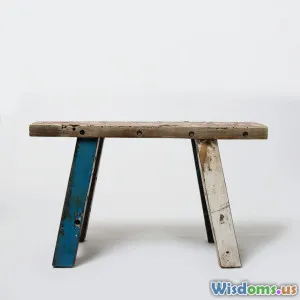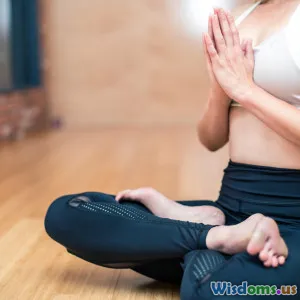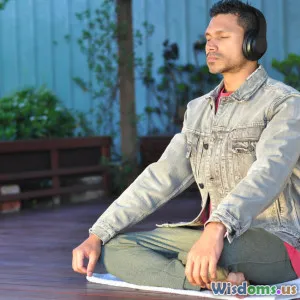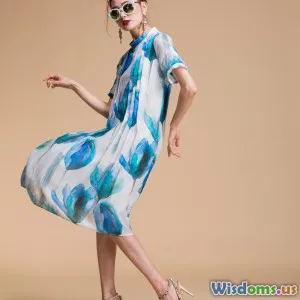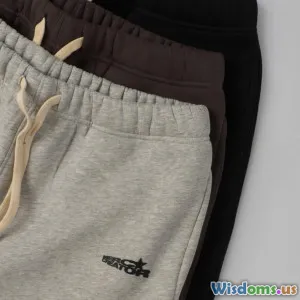
Athleisure Versus Traditional Sportswear: Which Is Best for You?
8 min read Discover the pros and cons of athleisure and traditional sportswear to find what fits best for your lifestyle and needs. (0 Reviews)
Athleisure Versus Traditional Sportswear: Which Is Best for You?
Introduction: A New Age of Activewear
In recent years, the worlds of fashion and fitness have intertwined more than ever before. A revolution has taken place in wardrobes everywhere, blurring the lines between performance wear and casual style. At the heart of this shift lies a compelling debate: Athleisure or Traditional Sportswear – which is the best choice for you?
Hundreds of millions now opt for activewear not just during workouts but as everyday attire. Market research firm Allied Market Research projected the global athleisure market to reach $517 billion by 2025, reflecting consumers’ appetite for versatile, comfortable clothing that transitions from gym to street effortlessly. Meanwhile, traditional sportswear brands continue innovating technical fabrics designed specifically for peak athletic performance.
This article dives deep into both styles to help you decide which aligns best with your lifestyle, goals, and comfort preferences.
Understanding the Differences
What is Athleisure?
Athleisure is a style of clothing designed to be worn for both exercise and relaxed everyday wear. It emphasizes comfort, fashionable cuts, and multifunctionality. Key hallmarks include stretchy leggings, yoga pants, fashionable sneakers, and casual tops.
Example: Lululemon’s Align leggings, known for their buttery-soft feel and flattering fit, are popular both in yoga studios and city streets.
Traditional Sportswear Defined
Traditional sportswear is engineered for athletic activities primarily. Its focus lies on optimizing performance through advanced fabric technology, ergonomics, and sport-specific design.
Sportswear pieces include moisture-wicking shirts, compression gear, fast-drying shorts, and shoes designed for activities like running, soccer, or basketball.
Example: Nike’s Dri-FIT technology is aimed at keeping athletes dry and comfortable during intense training.
Practical Considerations: Performance vs. Style
Functionality and Performance
When it comes to athletic performance, traditional sportswear generally holds the upper hand. These garments incorporate technologies such as:
- Moisture Management: Materials like polyester blends that wick sweat away from the body.
- Breathability: Mesh panels or ventilation zones.
- Durability and Support: Compression fabrics that support muscles and reduce fatigue.
This technical superiority translates to better comfort and injury prevention during physical activities.
However, leading athleisure brands are increasingly innovating to narrow this gap by integrating performance fabrics in comfortable designs.
Style and Versatility
Athleisure is designed with fashion in mind. It adopts trendy cuts, color palettes, and subtle branding to ensure wearability beyond workouts.
Example: Adidas’ collaboration with luxury designers blurs the fashion-and-function line, making joggers or hoodies acceptable office wear or casual meetups.
This versatility appeals strongly to millennials and Gen Z consumers seeking to optimize wardrobe space and maintain an active lifestyle without sacrificing style.
Comfort and Everyday Use
Comfort is arguably the biggest driver behind athleisure’s rise. The soft, stretchable fabrics, loose yet flattering fits, and breathable materials make athleisure clothes ideal for daylong wear.
For instance, many people now choose athleisure for travel due to its elasticity and non-restrictive nature.
Which One Should You Choose?
Assessing Your Activity Level
- Highly Active Athletes: Prioritize traditional sportswear built for peak performance and sport-specific support.
- Casual Exercisers and Lifestyle Users: Athleisure offers comfort and style, suitable for light workouts, yoga, or running errands.
Matching your Personal Style and Needs
- Work-from-Home and On-the-Go: Athleisure meets the need for comfort during zoom calls and spontaneous coffee runs.
- Competitive or Serious Training: Choose traditional sportswear engineered for maximum function.
Budget Considerations
Traditional sportswear can be more expensive due to specialized materials and technology; athleisure may range from affordable basics to premium designer collaborations.
Environmental Impact
Some consumers also factor sustainability. Brands like Patagonia are innovating with recycled and eco-friendly materials in traditional apparel, while others in athleisure promote slow fashion designs meant to reduce waste.
Real-World Insights and Market Trends
-
According to a 2020 IBISWorld report, athleisure’s share grew by 600% over the past decade, driven by comfort and the home fitness boom.
-
Sports giants like Nike and Under Armour continue investing heavily in research to develop garments that provide both performance and everyday practicality.
-
Influencers and celebrities endorsing athleisure brands have propelled these styles into mainstream culture.
-
The COVID-19 pandemic accelerated the adoption of athleisure as people prioritized comfort while blending work and leisure at home.
Conclusion: Finding Your Perfect Fit
Both athleisure and traditional sportswear serve important roles in today’s active, style-conscious world. The best choice depends largely on individual priorities — whether you value performance, style, comfort, or a blend of all three.
If you’re a serious athlete, traditional gear remains indispensable for achieving your fitness goals safely and effectively. Conversely, if your routine is a mix of light exercise and busy daily activities, athleisure provides unmatched convenience with a trendy flair.
Ultimately, many consumers find a combination of both is ideal: technical sportswear for workouts and athleisure for relaxing, socializing, and running errands.
Start by evaluating how much time you dedicate to fitness, your lifestyle demands, and try incorporating pieces from both categories to curate a wardrobe that supports your active, multifaceted life.
In the evolving landscape of activewear, the choice between athleisure and traditional sportswear is less about a stark either-or and more about smart personal balance.
References:
- Allied Market Research, Athleisure Market Report 2021
- IBISWorld, Activewear Market Trends
- Nike Official Website - Technology & Innovation
- Lululemon Customer Reviews & Product Descriptions
- Patagonia Sustainability Initiatives
Rate the Post
User Reviews
Other posts in Health & Wellness
Popular Posts











